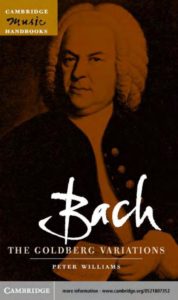Bach – French Suite No. 5 BWV 816 (complete) with sheet music
Pianist: Hamelin

Sheet Music download.
Allemande: 0:02 Courante: 2:50 Sarabande: 4:14 Gavotte: 9:20 Bourrée: 10:22 Loure: 11:30
The fifth ‘French’ suite is the most tuneful and elegant of the six. It is also the most Italian, says harpsichordist Francesco Corti. You can hear that straight away in the Allemande, but even in the Sarabande – a piece where Bach usually searches for harmonic expression – the melody gains the upper hand. This Sarabande could easily be an adagio from an Italian sonata. The right hand plays a beautifully ornamented melody and the left hand provides the accompaniment. The ornamentation is written out in two variations in various manuscripts. Francesco Corti is happy to use both, keeping the most exuberant variation for the da capo.
The relatively uncomplicated Gavotte with its catchy melody is a great audience favourite. In the Bourrée, Bach goes into a higher gear with an extremely active left hand, which races along below the simple rhythm of the right hand.
In this suite, Bach adds an extra dance, a Loure, which Corti explains is a sort of slow minuet. Bach rarely used this dance form. Only one other example survives, in the Violin Partita No. 3, BWV 1006. Later on, Bach may have taken out the Loure, as it no longer appears in later copies of the suite.
The Gigue that closes the suite is one of the most extensive written by Bach. The time signature (12/16) demands a fast tempo. But it is not just hard and fast. The piece is actually a reasonably complete two-part fugue. In the second section, the theme is mirrored and Bach places it in a breathtakingly harmonic rollercoaster.
Bach composed his ‘French’ suites as a young man of thirty, when he was working at the court of Köthen. However, the suites have nothing to do with the court. Bach wrote them for teaching purposes in his own private circle. The first five appear in their original form in the little music book he compiled in 1722 for his second wife Anna Magdalena, possibly as a wedding present. But Bach continued to rework the pieces. The later versions, with the addition of a sixth suite, have survived thanks to the many copies made by his pupils. They are rewarding practice pieces that despite a certain compositional complexity (it is Bach, after all), do not make extreme demands on the player.
The epithet ‘French’ was not given by Bach himself and appears for the first time in a text from 1762, twelve years after Bach’s death. The pieces are no more French than his other keyboard suites, just as the previously composed ‘English’ suites are not particularly English either. Indeed, the ‘English’ suites, with their extensive preludes, actually follow the French model to a certain extent. But as usual, here Bach is using a cosmopolitan language; an ingenious synthesis of various European styles.
The ‘French’ suites do not have a prelude, but launch straight into the first dance: an allemande. This is followed by the classical sequence of courante, sarabande and gigue, with a somewhat freer selection of dances in between the sarabande and gigue, ranging from the minuet and the gavotte to the bourrée and the less common loure.
The Bartolotti House
We made this recording at The Bartolotti House, at Herengracht 170 and 172. The house at the back of no. 170 was occupied by harpsichordist, organist and conductor Gustav Leonhardt from 1974 to his death in 2012. Leonhardt was one of the pioneers of early music in the Netherlands. As a teacher and performer, he was a source of inspiration to many harpsichord players around the world.
It is one of the most impressive buildings in the old centre of Amsterdam. It was built around 1620 as a residence, on commission from the wealthy businessman Willem van den Heuvel, who had inherited a lot of money from a childless uncle by marriage, called Giovanni Battista Bartolotti, who came from Bologna. The Dutch Renaissance-style design was probably done by the Amsterdam city architect Hendrick de Keyser.
Over the centuries, the house has been split up and has undergone several modernisations. You can still see many wonderful historical decorative features from the various renovations. The two parts of the Bartolotti House came into the possession of Vereniging Hendrick de Keyser, which now has its office there.
Browse in the Library:
Or browse in the categories menus & download the Library Catalog PDF:
